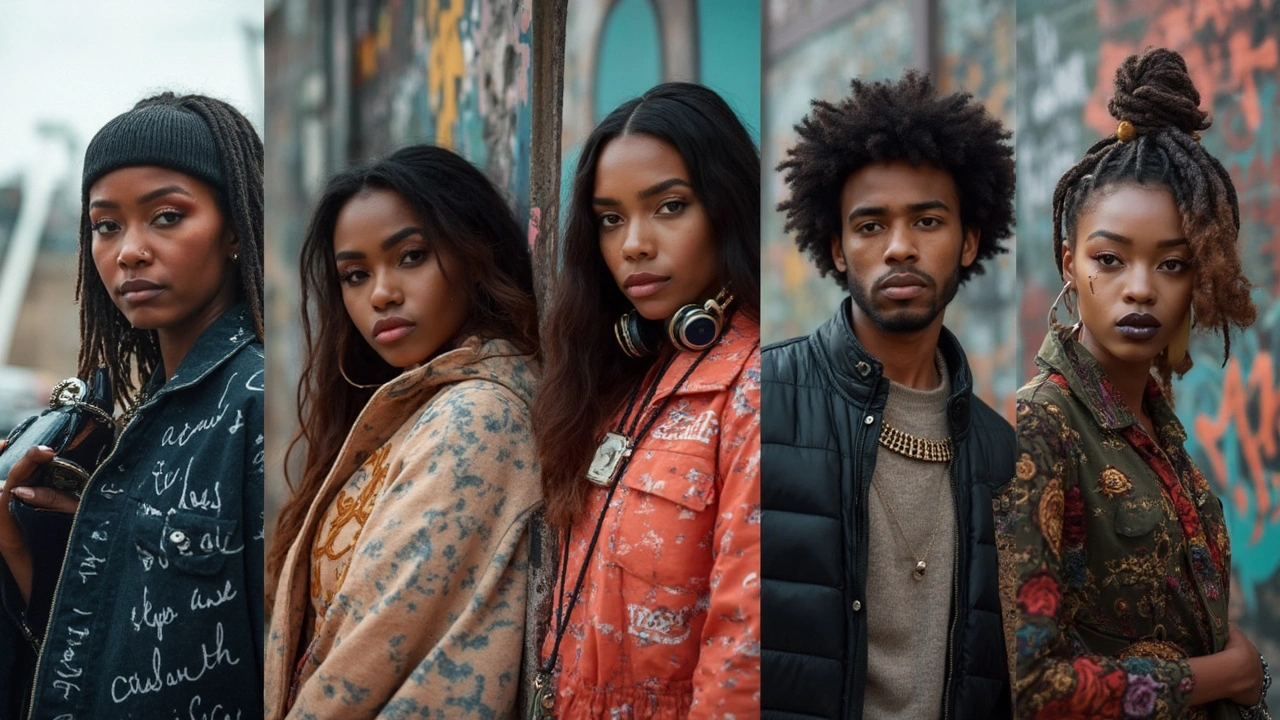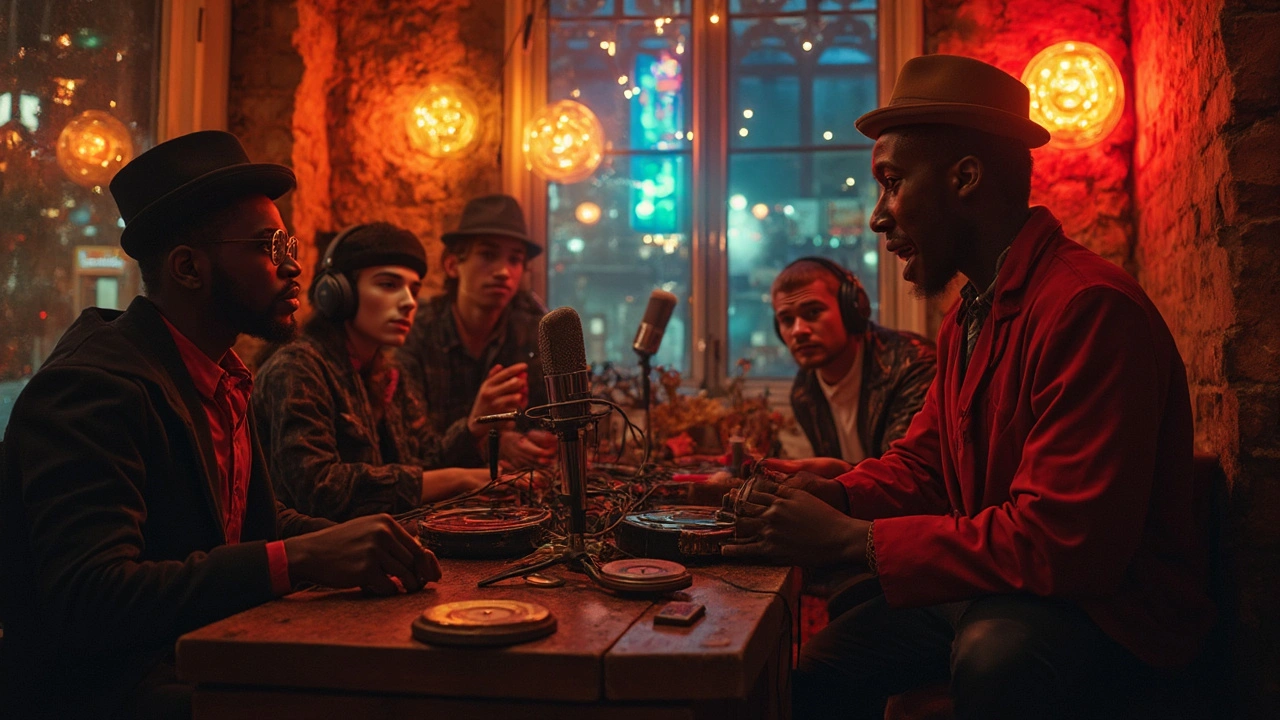R&B's revival isn't happening quietly. Instead of peaking in smoky bars or dusty record stores, today's rhythm and blues artists are going viral on social media, dropping genre-bending tracks straight to your playlist. Scrolling through TikTok or tuning in to global Spotify trends, you’ll see just how quickly some voices are turning heads. Streaming services now do what radio stations once did—break new artists or send old-schoolers soaring back up the charts. The catch? The landscape's flooded. So, who’s actually rising above the noise, shaping 2025's R&B vibe in unexpected ways?
Fresh Talent: The Names You’ll Be Hearing Everywhere
Meet the breakout stars who are changing the R&B game. These artists might not (yet) have a star on the Hollywood Walk of Fame, but you won’t be able to miss them for long. They’re topping charts, collaborating with legends and newcomers alike, and giving loyal R&B fans something new to obsess over.
1. Kaiyah Matthews – Hailing from Philadelphia, Kaiyah’s storytelling hooks and bedroom pop influences blend with classic soul. Her 2024 album “After Midnight” snagged the #2 spot on the US R&B chart. Unlike the heavily produced tracks dominating playlists, her songs stay stripped, warm, and honest. And her surprise duet with Leon Bridges this spring? Pure magic.
2. Roman de la Cruz – Roman is shaking up the UK scene with jazzy, Latin-tinged R&B that sounds like a London night out. His debut EP “Late Train” picked up over 40 million streams in five months. His skill on guitar sneaks in tongue-in-cheek riffs that pay tribute to Prince and Santana. If you’re after deep grooves, this is your guy.
3. Arielle Nia – This Toronto-based powerhouse made headlines after her single “Glass Ceilings” landed on Michelle Obama’s 2025 playlist. Her blend of silky falsetto and punchy synths gives nods to SZA and H.E.R., but she carves her own lane with unapologetic lyrics about Black female ambition.
4. Jerome Keyes – Raised in New Orleans and classically trained, Jerome fuses neo-soul with violin flourishes. His viral hit “Shadowboxing” got picked up by Netflix as the theme song for a new drama series. He’s redefining what an R&B instrumental looks like while still owning the mic.
5. Keisha Bloom – Her trippy, dreamlike vocals float over producer Yuto’s metallic beats. She swings between vulnerability and strength with ease, especially on her breakthrough track “Wonderland,” which charted Top 10 in Australia, the UK, and New Zealand (Tabitha and I can’t stop replaying it during Friday night cook-ups). Younger fans find her relatable, older listeners hear ‘90s echoes, and critics agree: Keisha’s only getting started.
It’s wild how each of these artists gives R&B a twist while holding onto that beating-heart core—raw, emotional storytelling. Instead of following old formulas, every name here pushes the genre somewhere new.
What Sets These New Artists Apart?
It isn’t enough now to just have a golden voice—you’ve got to have an angle. That’s something you see across all five rising stars. They’re not copying the greats like Aretha Franklin, Stevie Wonder, or Lauryn Hill. They’re learning from them, then flipping the script.
Kaiyah Matthews stands out by mixing modern R&B structures with retro recording techniques. Songs on “After Midnight” were recorded on reel-to-reel tape. She even posts behind-the-scenes videos showing her analog process, sparking fresh interest in vintage gear among Gen Z musicians.
Roman de la Cruz’s influences range from Tito Puente to D’Angelo. Rather than sticking to traditional English lyrics, he releases bilingual versions, bringing his Latin heritage directly into the R&B scene. His Instagram stories feature jam sessions with flamenco and jazz musicians, attracting a broad, international fanbase.
Arielle Nia’s visuals matter as much as her sound. She directs her own music videos, often using local Toronto artists and stylists. Her “Glass Ceilings” video was shot entirely inside a city streetcar, blurring the line between public protest and art. That keeps her voice both powerful and unmistakable.
Jerome Keyes put a symphony orchestra behind R&B hooks—a bold move some thought would flop, but his Spotify numbers show otherwise. He regularly breaks down his creative process in livestreams, giving aspiring artists insider tips on blending classical strings with synthesizers.
Keisha Bloom’s TikTok strategy deserves a mention. She drops short, mysterious teasers loaded with symbolism to drum up hype before each release. In 2025, her track “Wonderland” set the platform’s record for user-generated video remixes within hours.
If you’re aiming to follow in these footsteps, it pays to know the market. The table below shows some hard stats on how these artists compare with established stars on major streaming platforms in 2025 (as per Chartmetric and Spotify Wrapped data):
| Artist | Spotify Monthly Listeners | Instagram Followers | Debut Year | Top Streaming Track |
|---|---|---|---|---|
| Kaiyah Matthews | 5.1M | 670K | 2022 | After Midnight |
| Roman de la Cruz | 4.8M | 450K | 2023 | Late Train |
| Arielle Nia | 6.2M | 950K | 2021 | Glass Ceilings |
| Jerome Keyes | 3.7M | 778K | 2023 | Shadowboxing |
| Keisha Bloom | 6.9M | 1.2M | 2024 | Wonderland |
| H.E.R. | 8.5M | 7.2M | 2016 | Damage |
| SZA | 31.6M | 17.9M | 2012 | Good Days |
This isn’t just about numbers; it’s proof that personality and risk-taking land new stars in the race with the big names.

How to Stay Ahead of the R&B Curve
If you’re serious about exploring the R&B scene—not just when it’s trending, but all year—there are a few simple tricks. Forget waiting for commercial radio to catch up. Grabbing the freshest tracks involves paying attention to niche platforms and creator channels. Here’s how I do it (and no, you don’t need to move to Auckland or L.A. to keep up):
- Use algorithm-driven playlists on platforms like Spotify and Apple Music, especially “Release Radar” and user-curated R&B mixes. These update weekly based on your tastes.
- Check out Bandcamp and SoundCloud for exclusives—often indie artists drop gems here before they hit major services.
- Tap into social media snippets, especially TikTok song teasers or Instagram Reels. Sometimes, the biggest R&B track of the year surfaces as a 20-second meme before it has an official release.
- Follow music news from credible R&B blogs and online magazines, like Rated RnB, SoulBounce, or Okayplayer.
- Keep up with collaborations. When you see a new artist working with an established star, chances are high they've been handpicked as "the next big thing."
- Watch award nominations and “Artists to Watch” lists compiled at the start of each year for real-time direction. In 2025, the BET Awards and MOBOs had at least three artists mentioned above on shortlists.
- Don’t ignore the local scene either. Wellington’s CubaDupa and Auckland’s Laneway Festival have started adding breakthrough R&B slots (Tabitha avoids the rainy gigs, I drag her out anyway).
Why the World Needs Fresh R&B Voices Right Now
What keeps R&B at the heart of so many social soundtracks isn’t just the groove. It’s how artists tap into raw honesty—love, heartbreak, ambition, protests against injustice—with a voice that feels both contemporary and timeless. In a year where headlines are loaded and timelines move faster than a drum roll, there’s something grounding about music that doesn’t hide emotion behind digital perfection.
Look, the genre’s magic lies in its adaptability. When radio lost its grip, YouTube and streaming broke down the walls. That’s why artists like Keisha Bloom can get big on TikTok and still crush it in live venues. Jerome Keyes posts violin-tipped R&B clips on Twitch, connecting with fans who write back in real-time.
And fans are ready to rally behind new faces, especially when their work is connected to social causes or they share authentic, imperfect moments online. Kaiyah Matthews regularly shouts out mental health resources, while Arielle Nia’s charity merch sales go straight to literacy programs for girls. These aren’t just side projects—they’re reasons fans latch on and stick around.
If you want to support, buy tracks from Bandcamp on release days (more money goes to the artist). Stream whole albums, not just singles, to help them climb the charts. Engage on their posts, leave reviews, and share new finds in your group chats. It’s never been easier—or more important—to play a role in who rises up.
So if someone you know is stuck in a 2000s playlist rut, toss them a rec from this list, maybe along with a pair of decent headphones. R&B is pulsing with energy, grabbing influences from gospel churches to bedroom studios. And in 2025, the best time to jump in is now, while the sound is still new and the voices are only getting louder.

